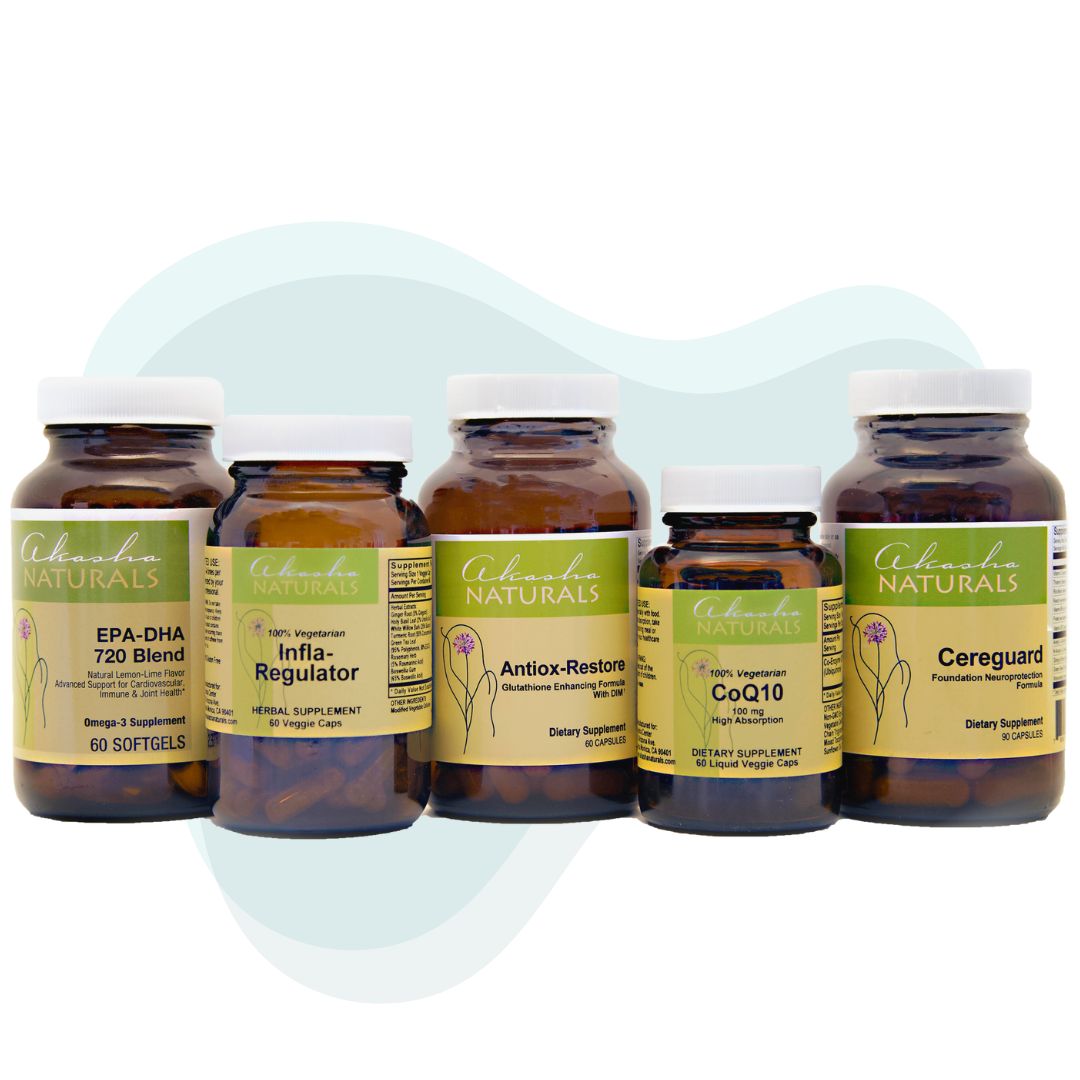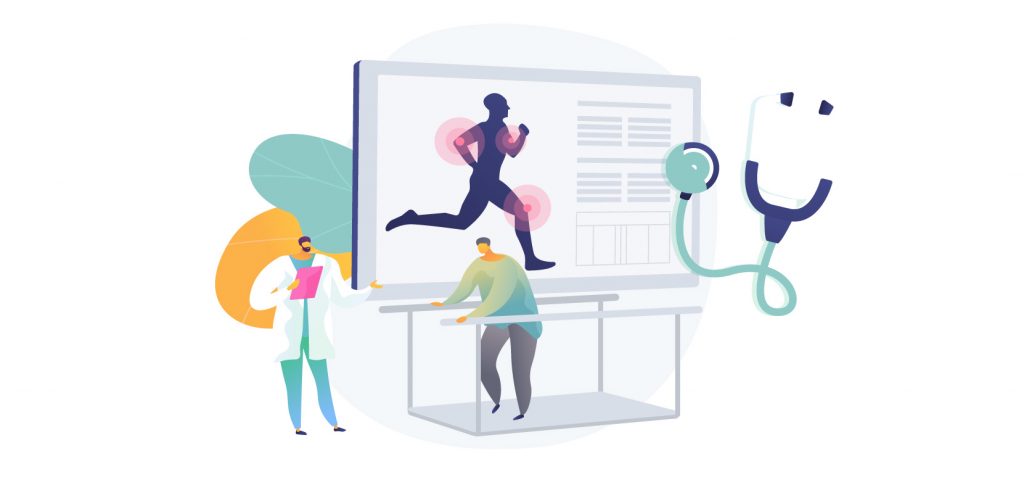What is arthritis?
Arthritis is defined as painful inflammation and degeneration of one or more joints. Symptoms include pain, swelling, reduced range of motion and stiffness.
How common is it?
One of the most common reasons why patients seek help from their doctor is for back or knee pain. In the United States, 23% of all adults, or more than 54 million people, have arthritis. It is a leading cause of work disability, with annual costs for medical care and lost earnings of $303.5 billion (4). The most common form of arthritis is osteoarthritis. Other forms include gout, rheumatoid arthritis, and lupus.
Why do we get arthritis?
There are two types of injuries to joints that occur. The first type is from overuse. This occurs as our joints and muscles endure years of “wear and tear” just by walking, running, jumping, and playing sports. The cartilage that surrounds and protects the bones endures low-grade inflammation on a daily basis. This “wear and tear” progresses for years, as the cartilage becomes thin and frayed with joint space narrowing. This degradation is known as osteoarthritis and is similar to the wearing down of shoe soles after constant and consistent use.
The second type of injury is known as misuse, in which a joint twists in a direction that it is not designed to, causing injury. A common example of a misuse injury is twisting your knee while jumping during a basketball game, in which the anterior cruciate ligament (ACL) tears. When this happens, the knee becomes unstable. If this initial injury does not heal properly, a lot of pressure can be placed on the year for subsequent years which can lead to post-traumatic arthritis, the second common cause of patients seeking medical care in Orthopaedics.
Complications
As arthritis progresses, the cartilage that lines the bone breaks down until you get “bone-on-bone” arthritis. At this stage, the joint may become misaligned and lose its shape. Severe arthritis can negatively impact your everyday life, reducing your ability to perform daily tasks such as walking to the bathroom, standing up from a chair or down the block. If it affects your hands and arms even brushing your teeth. As you can imagine, life can become very difficult which is why arthritis is a leading cause of disability.
Types of Treatment
The traditional standard Western Medicine treatment for musculoskeletal injuries or arthritis is to take non-steroidal anti-inflammatory drugs (NSAIDs) like ibuprofen, along with physical therapy with the aim to temporarily reduce the inflammation and pain, and strengthen the muscles around the joint. This method is the easiest and cheapest way to treat arthritis, and hence most commonly used by Orthopedists and pain management specialists. When this does not help and the pain persists, the next step is to inject steroids directly into the joint.
Although these drugs may temporarily reduce pain, they do not solve the underlying cause of the problem and they have many detrimental side effects. NSAID’s have been shown to disrupt the normal bacteria that lives in the gut. When this occurs, symptoms that develop are bloating, abdominal pain and discomfort, change in bowel movements.
NSAID overuse is one of the leading causes of gut dysbiosis and leaky gut alongside antibiotic use. When the gut flora is unbalanced, everything in the body is affected, which may lead to fatigue, depression, brain fog, and the list goes on. Furthermore, the use of NSAIDs are known to cause ulcers of the intestine lining and bleeding, as well as kidney damage. These drugs are only meant to be used for short-term use, and many people take them every day for months, even years for pain relief!
Steroids work similarly to NSAIDs in which they temporarily stop inflammation. However, they are catabolic to the joint, which means that they actually break down the bone lining and weaken the cartilage and bone. When overused for conditions like arthritis, in which patients return every 3-6 months to their orthopedist for injections, it is secretly worsening the severity of the arthritis.
Surgery
When NSAIDs or injected steroids do not reduce pain, the final step is usually joint replacement surgery to replace the arthritic or damaged joint with hardware. This is a very common procedure, in which 5.26% of patients will have hip replacement surgery by the age of 80, and 10.38% will undergo total knee replacement surgery. In both circumstances, female patients are the majority of surgical patients. Chronic post-surgical pain remains an unresolved problem for patients undergoing total knee replacement surgery (2). According to literature, 44% of patients will experience persistent pain after total knee replacement surgery. According to studies, female gender, younger age, psychological distress, and preoperative pain and duration and increase risk of post-surgical pain. Therefore, women are the common target for these surgeries, and the most likely to endure pain afterwards.
Spine “decompression” surgery has even poorer outcomes than hip and knee replacement surgery. The overall failure rate of lumbar spine surgery was estimated to be 10-46% over the last 20 years (5). The term “failed back surgery syndrome” is becoming a commonly named term. It is when the presurgical expectations do not mean the outcomes of surgery. Given that these rates have not improved despite advances in technology and advanced technique, the number of patients developing failed back surgery syndrome can be expected to increase.
Ultimately, surgery is costly, invasive, and has a high incidence of post-operative pain and persistent disability.
Regenerative Medicine, what is it and how did it become popular?
So the big question is, are there other options outside of the standard Western Medicine approach to arthritis treatment?
Rather than breakdown the bones, or replace the bones with surgery, regenerative medicine is an alternative option with many benefits. The body has many innate mechanisms to heal itself. Regenerative medicine is based on the fact that human blood and platelets possess all the essential elements needed to reconstruct tissue.
The use of PRP emerged around 20 years ago, when surgeons began using it in dental surgery and in the operating room for hard-to-heal fractures and around difficult joint replacements which produced promising results. In 2008, Pittsburg Steeler receiver Hines Ward sprained his medial collateral ligament in his right knee during an AFC championship game. The medical professionals on the Steelers’ training staff thought that Ward would be out for 4-6 weeks however, after using PRP, his recovery was expedited and he was able to not only return to playing but help the Steelers win the Super Bowl (3)!
This story gained national attention and the use of regenerative medicine with PRP lead to the publication of controlled studies in mainstream orthopedic journals. More studies were published on the use of PRP to heal many common orthopedic injuries outside of the operating room, such as rotator cuff injuries, ligament and tendon injuries, and sports injuries like golfers and tennis elbow. Moreover, the use of regenerative medicine is gaining increasing popularity for use in arthritis.
What is Platelet Rich Plasma (PRP) and how does it help with joint pain and arthritis?
Plasma is the liquid part of our blood that carries the platelets, red blood cells and white blood cells. Platelets have many functions in our body. One of the main functions is to cause blood clots in order to stop bleeding by forming a temporary plug that seals breaks in the blood vessel. Platelets also contain proteins with enzymes, minerals and growth factors by which they play a key role in activating the body’s innate healing abilities. This particular feature of platelets is unique and is why the use of platelets has been expanded upon over the last decade. As Dr. Jeffrey Piccirillo, one of the early innovators in PRP, wrote it in his book, The Perfect PRP, “If platelets can cause healing in a laceration, what would happen if we concentrate the platelets and plasma to an area requiring a higher degree of healing. Would the same mechanism occur?” (3).
Platelets release protein growth factors that initiate the healing of wounds (1). For example, one of the main growth factors or platelets helps to create new blood vessels, a process called angiogenesis. Once activated, these growth factors bind to receptors on target cells such as mesenchymal stem cells, fibroblasts, osteoblasts, epidermal and epithelial cells to promote tissue repair and regeneration. Tendons and ligaments do not heal as quickly as other tissues in the body. For example, cartilage such as the meniscus in the knee joint, contains very little blood supply and depends on joint fluid for nutrition (3). PRP is so helpful for conditions such as arthritis because it can supplement the growth factors and cytokines that the area does not have due to poor vascularity or trauma.
In simple terms, because PRP contains healing growth factors, it is able to potentiate the repair of bones, ligaments, tendons, muscles, skin, hair and other cells in our body. It is therefore used not only in sports medicine and pain management, but in aesthetics for hair and skin rejuvenation!
Process
It is a very simple procedure, performed both surgical and in the outpatient setting, by trained medical practitioners. The patient’s own blood is drawn into specialized tubes. The tubes have a special gel that will separate out the red and white blood cells once spun for approximately 10 minutes in a centrifuge machine. What you have left is Plasma and platelets. The PRP is then extracted and injected into the joint, soft tissue, face, scalp, vein etc.
Safety, Risks and Recovery Time
There are little to no risks associated with the use of PRP. I want to highlight here that the greatest feature of PRP is that it is autologous, meaning that it comes from your own body. This means that there are no concerns of disease transmission or rejection from the host’s immune system. The risk involved with injections (of either PRP or medications) into the joint is lack of aseptic technique, which is similar across all fields. If a trained medical professional is performing the injection in a clean environment, wearing the proper personal protective equipment, there is a small chance of infection. However, with any injection the risks include nerve and tissue injury, and pain at the injection site (6).
When PRP is injected, it is best to rest the affected area for 48 hours or longer. These recommendations are related to the post procedure swelling or pain that may or may not occur, rather than the PRP itself. BecausePRP is a natural substance, rather than a pharmaceutical drug, you may not notice an immediate difference after receiving the injections (6). It may take several weeks or months to see a reduction in pain and increased mobility of the affected joint.
Summary
Arthritis is a very common yet debilitating ailment. But now, with PRP, there is a treatment that is long-lasting, does not carry side effects and does not carry the risks or costs of going under the knife. The Akasha Center for Integrative Medicine now offers treatment for arthritis and many other musculoskeletal injuries with regenerative medicine using PRP and other modalities.
Love and light,
Gina Galvez, M.S., PA-C
About the Author
A little bit about me, I have 2 years of experience in Orthopaedic Surgery at New York University, The Center for Musculoskeletal Care, in which Iassisted in many knee, hip and shoulder surgeries, including joint replacement surgery, as well as outpatient joint and musculoskeletal injections. I happily taught Orthopaedic Surgery and an Integrative Medicine course at Long Island University’s Physician Assistant Program for 3 years. After moving from New York City to Los Angeles, I have had the privilege to practice Integrative and Regenerative Medicine, watching countless patients become walk, run and move freely with the use of PRP and stem cells for conditions such as arthritis. I am excited to be a part of this incredible field of medicine and share it with people who want to live a happy, pain-free life! Feel free to email me directly to book a consultation at ggalvez@akashacenter.com
References
1. Dhurat, Rachita, and Ms Sukesh. “Principles and Methods of Preparation of Platelet-Rich Plasma: A Review and Author’s Perspective.” Journal of Cutaneous and Aesthetic Surgery, Medknow Publications & Media Pvt Ltd, 2014, https://www.ncbi.nlm.nih.gov/pmc/articles/PMC4338460/.
2. J;, Chodór P;Kruczyński. “Predicting Persistent Unclear Pain Following Primary Total Knee Arthroplasty.” Ortopedia, Traumatologia, Rehabilitacja, U.S. National Library of Medicine, https://pubmed.ncbi.nlm.nih.gov/28155832/.
3. Piccirillo, J, DO. Perfect PRP. 2021.
4. “Arthritis.” Centers for Disease Control and Prevention, Centers for Disease Control and Prevention, 2 Nov. 2020, https://www.cdc.gov/chronicdisease/resources/publications/factsheets/arthritis.htm.
5. Daniell, James R, and Orso L Osti. “Failed Back Surgery Syndrome: A Review Article.” Asian Spine Journal, Korean Society of Spine Surgery, Apr. 2018, https://www.ncbi.nlm.nih.gov/pmc/articles/PMC5913031/.
6. Nall, Rachel. “PRP: Cost, Side Effects, and Recovery.” Healthline, Healthline Media, 20 Aug. 2021, https://www.healthline.com/health/prp#recovery-time.













